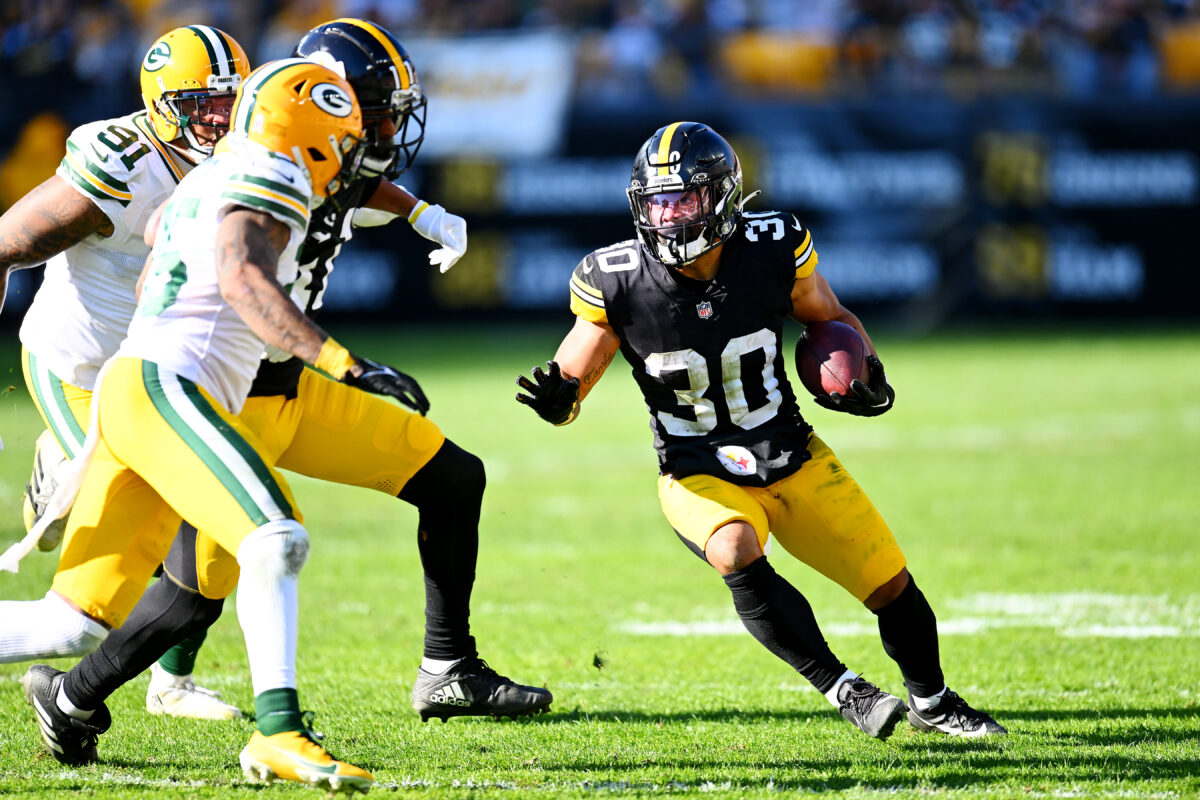The Green Bay Packers enter Week 11 giving up explosive plays on defense at one of the highest rates in football this season.
According to Arjun Menon of PFF, an explosive running play is defined as a rush of 10 or more yards. The Packers have allowed 30 such rushes this season, which is the fourth most in the NFL. An explosive passing play is a pass of 20-plus yards. In that regard, the Packers’ defense is doing better, allowing the eighth-fewest explosive pass plays.
However, overall, the 55 total explosive plays given up by the Green Bay defense is the eighth-most in football, and they are allowing 6.1 explosive plays – whether run or pass – per game.
The M.O. of the Joe Barry defense is to not give up the big play and force the offense to string together long drives in order to put up points. The thought process behind this is that consistently putting up points is not an easy task when doing so requires 10-plus play drives each time. Odds are that, more often than not, the defense will either make a play or the offense will make a mistake, and the drive will stall out.
I suppose from a passing game perspective, the defense is accomplishing that. Rarely this season has this defense been beaten over the top. However, because they provide so much cushion, it creates easier pitch and catch opportunities underneath, and the Packers’ struggles with tackle can still lead to explosive plays.
The Minnesota game is a prime example of this. The Packers’ defense did a great job on early downs, forcing the Vikings into third-and-eight or longer on 12 occasions, but still managed to give up seven first downs in those situations.
The real issue, however, as Menon’s numbers reflect, is the run game, with the most recent Pittsburgh game encapsulating the overall issues that Green Bay is experiencing. Situationally, players are not always being put in the best positions to be successful, with light boxes against run-heavy personnel being an example of that. With that said, the players aren’t performing well consistently either, with missed tackles and blown gap assignments being the norm.
“It was a combination of missed tackles,” said Matt LaFleur on Monday. “Missed assignments. There were a couple times where we were playing single-high defense, where it’s solo gap football, and we had two guys in one gap.
“There were a couple times where they got us in two safety looks, and when you do that, you’re going to be a little short in terms of your front, and they took what should be five, six, seven-yard gains and made them into explosion plays. There’s a lot of things we could have done at a much higher level.”
To play this bend-but-don’t-break style of defense it requires complementary football, something that has eluded the Packers this season. If a defense is going to allow longer drives, they then need the offense to at least string together a few first downs. Otherwise, they are right back on the field and wear down quickly, and things can spiral out of control.
Due to the Packers’ own inability on offense to sustain drives consistently and the defense not being able to get off of the field, opponents are averaging nearly 65 plays per game against Green Bay- the 10th most in football.
As already mentioned, a key element to this style of defense is that you’re banking on miscues to end the opponent’s drives, whether self-inflicted or caused by the defense. An issue is that the Packers’ defense doesn’t force a lot of those mistakes. Their third down defense has been trending in the wrong direction as of late, ranking in the bottom third in opponent conversion rate the last three games, while their eight takeaways are the second-fewest in football. Green Bay also hasn’t gotten after the quarterback very well to force the issue, ranking 22nd in total pressures this season.
The Packers’ saving grace right now that is preventing things from being disastrous is that they are holding up in inside the 20-yard line, ranked 10th in red zone defense and 11th in points per game allowed—although it’s not as if they’ve faced a lot of top offenses either.
At the end of the day, one of the all-encompassing issues that this Green Bay defense has is that there isn’t that one thing or one element that they can hang their hat on. What is it that this defense does really well? At its core, this defensive system is supposed to prevent big plays, and I guess they are accomplishing that in the passing game. However, the number of explosives runs given up are negating that aspect.
